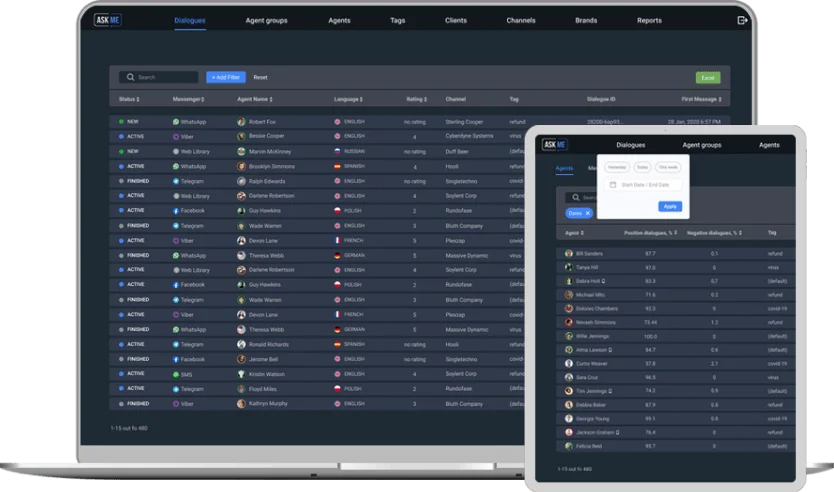While technology can prove to be a great asset to your company, it could also cause harm if not understood and used properly. In spite of its many benefits, as mentioned above, cloud computing also has its disadvantages. Businesses, especially smaller ones, need to be aware of these cons before going in for this technology.
For more information about the processing of your personal data please check our Privacy Policy. «It’s not to say that a college degree can’t prepare you to work in the cloud, but it’s no longer the only way to acquire the skills you need to succeed,» he said. A computer science degree program introduces the base concepts of various tech career and research fields, including robotics, biotechnology and more.
What Is an Example of Cloud Computing?
Applications built using a cloud native architecture offer a faster time to market, more scalable, efficient development and improved reliability. The previous article included a definition https://www.globalcloudteam.com/ of cloud native, its connection to DevOps methodology and architectural elements. This article will cover the pros and cons of cloud native adoption and implementation.

Cloud development may be used to build practical and convenient goods for your users if it is done well. Companies can integrate advanced cloud techniques into web applications and other virtual solutions using various services, including remote data centers, creation what is cloud development tools, and operating systems. Because software and data are stored remotely in cloud computing, data security and platform security are a big concern. Cloud security refers to the measures undertaken to protect digital assets and data stored on cloud-based services.
Sorry! page not found or access denied.
For example, some business leaders believe that utilizing more than one public cloud will somehow preserve their bargaining power with other providers. Thanks to competition, all the major cloud providers have pretty similar offerings. So, in the event you find yourself in a dispute with your cloud provider, it’s feasible to move to another one (though not ideal, since your teams will need additional upskilling). You’re not beholden to a huge pile of sunk cost in capital assets from your old provider. And if your cloud architecture is designed properly, everything should be relatively portable.

There are several types of cloud computing, including Platform as a Service (PaaS), Software as a Service (SaaS), and Infrastructure as a Service (IaaS). This is especially true concerning cloud-related concepts, which degree programs may not even cover in detail. Degree granting programs have limited ability to modify their curriculum due to rigorous accreditation processes.
Is Cloud Computing Secure?
Many vendors also started offering multi-cloud solutions, which allow you to use solutions from different platforms. For instance, you can link Microsoft Azure and AWS systems to get the best of both. In fact, 94% of enterprises already use a cloud service and the public cloud service market is expected to reach $623B by 2023 worldwide. With increased efficiency, scalability, and cost savings, it’s no wonder more organizations are adopting cloud, hybrid cloud, or multicloud technology. In this guide, we’ll cover what hybrid cloud computing is, how it works, pros and cons, types of hybrid cloud services, and how to choose a provider. The idea is that a given application runs typically in a private cloud or a local computing environment.
- The cloud structure allows individuals to save storage space on their desktops or laptops.
- When using cloud services, cloud service providers take care of the maintenance and backups.
- Our goal is to deliver the most accurate information and the most knowledgeable advice possible in order to help you make smarter buying decisions on tech gear and a wide array of products and services.
- This means the user is not required to be in a specific place to gain access to it, allowing the user to work remotely.
- Ensure you’re willing to pay for a subscription that will increase in value over the years.
- You won’t be able to take full advantage of any single provider’s efficiencies, and you risk reducing the potential ROI of your cloud investments.
It is hard to change, adapt, or update the software that is being stored on a number of devices. It will take tremendous effort and time to make the necessary changes and improve the functioning of that software, which is the difference between traditional and cloud development. If you’re wondering whether to switch to the cloud, the pros and cons of cloud computing may seem confusing at first. A well-designed environment for the cloud is not just a technical necessity; it is a method of building high-performance, low-maintenance applications to satisfy end users. By following the rules of cloud architecture and optimal practices, firms will get real value from their investments in advanced technologies and prepare the IT environment for the future.
What are the Disadvantages of Cloud Computing?
The cloud development architecture relies on the adoption of several APIs. As with any technology, there is a learning curve for both employees and managers. But with many individuals accessing and manipulating information through a single portal, inadvertent mistakes can transfer across an entire system.

In theory, private clouds provide greater control and security, though it’s up to a company’s IT team to ensure that happens. Administrators use public subnets to place the right permissions on global servers. Encryption keeps confidential data secure and helps to avoid a data breach. Cloud vendors keep their environment secure for their customers through network monitoring, threat detection, cybersecurity framework and fraud prevention. Identity and access management (IAM) roles focus on making application programming interface (API) calls and other special privileges. Because the infrastructure of the cloud is owned and managed by the service provider, businesses may worry about not having enough control over the service.
What are some “wrong” reasons to adopt multiple public cloud providers?
A single point of failure is what led to the infamous Equifax and Verizon data breaches, and many companies have taken steps to avoid this fatal flaw in storage security. Without a cloud computing solution, all of your data is tied to the physical computers they reside in. If your local hardware experiences a problem or gets destroyed, you might end up losing your data. According to Verified Market Research, the AI software market was worth 53.6 billion in 2020 and is projected to reach a staggering 850.6 billion by 2028. As AI becomes more commonplace, consumers will expect new cloud software and infrastructure to incorporate AI.

Encryption protects vital information, but if that encryption key is lost, the data disappears. Cloud-based software offers companies from all sectors a number of benefits, including the ability to use software from any device either via a native app or a browser. As a result, users can carry their files and settings over to other devices in a completely seamless manner. Rather than keeping files on a proprietary hard drive or local storage device, cloud-based storage makes it possible to save them to a remote database. As long as an electronic device has access to the web, it has access to the data and the software programs to run it. While structured, high-quality training reduces time to full productivity, skill mastery comes through hands-on practice.
Increase Automation
Cross-platform development enables developers to build applications that can be seamlessly executed across various OSes, devices and cloud providers. This approach ensures a wider reach for the applications and a consistent user experience, irrespective of the end users’ choices. With the proliferation of diverse platforms, including mobile devices, desktops and IoT devices, the demand for cross-platform development has intensified. Traditionally, cloud vendors let you choose between private and public solutions.

Comentarios recientes